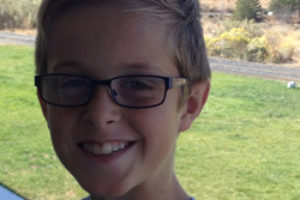Amblyopia (Lazy Eye)
At Washington Vision Therapy Center, we treat a variety of common eye conditions. As the leading cause of vision loss in children, amblyopia (also referred to as a lazy eye) is serious and treatment to correct it should begin as early as possible.
What is Amblyopia?
Deprivation amblyopia occurs when vision is blocked altogether in one or both eyes. This can occur due to a cataract, droopy eyelid, or other obstruction to the vision of the eye occurring in infancy or early childhood. Again, because the child has not had the experience of clear vision, the nerve pathways that help develop clear vision do not develop. This can be one of the most devastating types of amblyopia and is often one of the most difficult to treat.
There are three types of amblyopia. Strabismic amblyopia occurs when the eyes do not align properly. Typically if the eyes are not aligned, double vision results. However, because of the young adaptable brain, most children will learn to suppress or “turn one eye off.” Because the eye is not being used, proper vision does not develop and Amblyopia results.
Refractive amblyopia is the result of different degrees of refractive error (glasses prescription) in each eye. Similar to strabismic amblyopia, the difference in prescription need between the two eyes does not allow the two eyes to work together, so one of the visual signals becomes suppressed and proper vision does not develop. This type of amblyopia is often not noticeable unless discovered during an eye exam.
Deprivation amblyopia occurs when the eyes are deprived of visual stimulation due to cataracts or some other obstruction that causes the eye to not receive a stimulus. Again, because the child has not had the experience of clear vision, the nerve pathways that help develop clear vision do not develop.
How Our Developmental Optometrists Treat Amblyopia for Communities of Yakima, Ellensburg, Wenatchee, Kennewick, Pasco, and Richland, WA
The mainstay of treatment for many years has been to patch the “good” eye to push the amblyopic, or “poorer-seeing” eye to develop. While patching is still often very necessary and a part of our treatment, new research shows that outcomes are more complete and long lasting if you focus on the underlying problem. Getting the brain to use both eyes together is why the amblyopia developed in the first place; and therefore, teaching the eyes to work together as a team is more effective than just getting the one eye, that is not being used, to see better.
In vision therapy, we use the latest in 3D technology and have a host of activities specially designed to help the two eyes to learn to work together, thus improving the vision of the poorer-seeing eye and improving depth perception. This approach has shown to be more long lasting than patching alone and has the benefit of helping patients navigate their surroundings safer and more comfortably.
For extremely young children that require patching, but may have difficulty wearing an eye patch, other options include prescription eye drops that blur the near vision in the child’s strong eye. This forces the brain to use the weak eye strengthening the visual pathways to improve its degree of vision. These eye drops do have side effects that must be considered before use. Most eye doctors will consider other options first.
The vision professionals at Washington Vision Therapy Center can diagnose and effectively treat amblyopia and other eye conditions safely and efficiently. WAVTC offers services to the residents of upper and lower valley Yakima, Ellensburg, Wenatchee, Pasco, Richland and Kennewick, WA, as well as the surrounding Tri-cities and greater Yakima areas. Our staff can answer all of your questions concerning amblyopia and offer treatment plans capable of improving your vision and reducing your discomfort. Call Washington Vision Therapy today at 509-654-9256.




